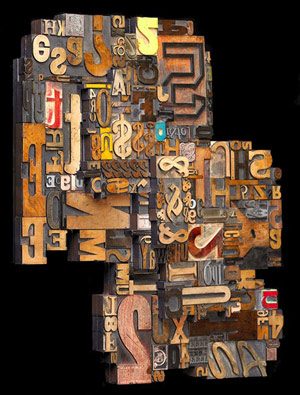 Douglas Morgan, a Collector of Typefaces, Dies at 75
Douglas Morgan, a Collector of Typefaces, Dies at 75
That’s the intriguing title of the obituary in the New York Times last Monday (written by Steven Heller).
“Mr. Morgan began acquiring antique wood types in the 1950s… These woodblock letters and fonts were commonly used in the mid- to late-19th century for advertisements, posters and handbills. Darker and larger than more delicate metal typefaces, they are familiar today as the bold lettering on vintage western wanted posters. Yet many classic wood type variations were intricately ornamental, used to grab the attention of passers-by in an increasingly cluttered advertising environment.
 But simply being a connoisseur of the wood type letterforms was not challenging enough for Mr. Morgan. In the late 1950s his company sold the type to designers, inspiring the rise of an ornately Victorian retro style in the graphic arts.
But simply being a connoisseur of the wood type letterforms was not challenging enough for Mr. Morgan. In the late 1950s his company sold the type to designers, inspiring the rise of an ornately Victorian retro style in the graphic arts.
 Among the designers that acquired the letterforms was Push Pin Studio in New York, which at the time was rejecting the cold uniformity of Modernist designs in favor of more eclectic revivalist styles. A studio member, John Alcorn, interpreted the Victorian decorative pastiche in his “Wood and Foundry Type” catalogs, which are now collectors’ items.
Among the designers that acquired the letterforms was Push Pin Studio in New York, which at the time was rejecting the cold uniformity of Modernist designs in favor of more eclectic revivalist styles. A studio member, John Alcorn, interpreted the Victorian decorative pastiche in his “Wood and Foundry Type” catalogs, which are now collectors’ items.
 The Morgan collection, including type and printers ornaments, is housed today at the Smithsonian National Museum of American History, in the Hall of Printing and Graphic Arts.”
The Morgan collection, including type and printers ornaments, is housed today at the Smithsonian National Museum of American History, in the Hall of Printing and Graphic Arts.”
I collect wood type myself, so Mr. Morgan is a kindred spirit. A bit of Google searching reveals that the “Hall of Printing and Graphic Arts” at the Smithsonian was put into storage in late 2003. Very sad. But in my search for more info on the Morgan collection I happily stumbled upon Lloyd Schermer’s wood type sculptures (that’s an example above).
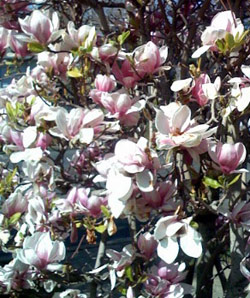 The weather has turned warm here in Northern California (that’s the magnolia tree in my front yard) and I’ve been outside as much as possible. But no one ever seems to want to enjoy the season at hand — my mailbox is full of enticing summer bookmaking programs, making me want to skip right to July.
The weather has turned warm here in Northern California (that’s the magnolia tree in my front yard) and I’ve been outside as much as possible. But no one ever seems to want to enjoy the season at hand — my mailbox is full of enticing summer bookmaking programs, making me want to skip right to July.![]() The Wells Book Arts Center in upstate New York has three week-long sessions, with intriguing titles like “Moving Parts: The Book as Kinetic Sculpture” taught by Dolph Smith and “Considering Text and Image” taught by Inge Bruggeman. A brochure is available here.
The Wells Book Arts Center in upstate New York has three week-long sessions, with intriguing titles like “Moving Parts: The Book as Kinetic Sculpture” taught by Dolph Smith and “Considering Text and Image” taught by Inge Bruggeman. A brochure is available here.![]() A new intensive debuts this year in England, at Wellington College in Berkshire, organized by two teachers well known here in the Bay Area — Dominic Riley and Michael Burke. You can find out all about it on their website.
A new intensive debuts this year in England, at Wellington College in Berkshire, organized by two teachers well known here in the Bay Area — Dominic Riley and Michael Burke. You can find out all about it on their website.![]() Anyone know of any more?
Anyone know of any more?
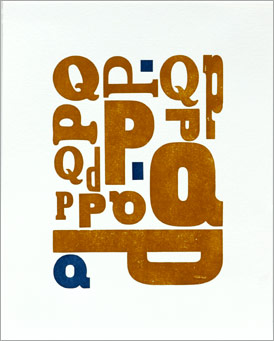

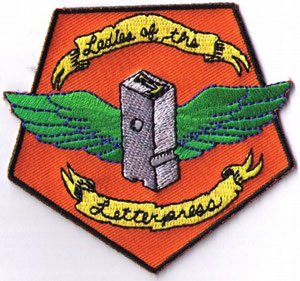
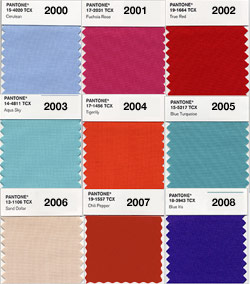 In a
In a 